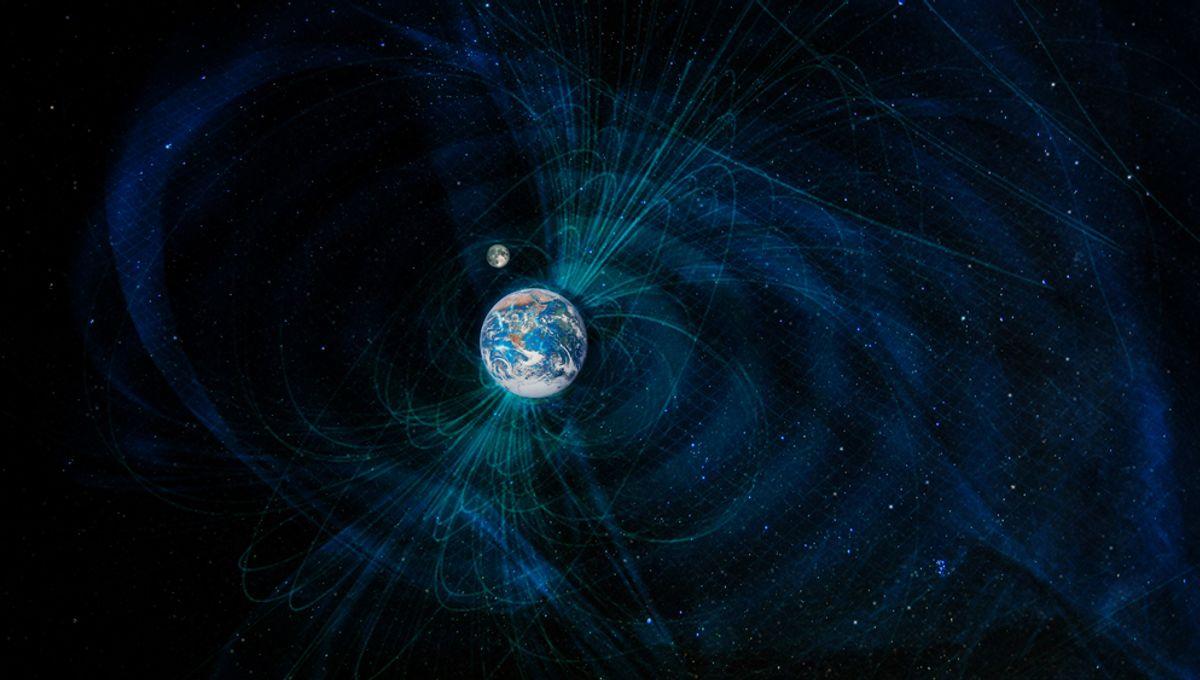-
Ροή Δημοσιεύσεων
- ΑΝΑΚΆΛΥΨΕ
-
Σελίδες
-
Blogs
-
Forum
Why Earth’s Magnetic Pole Reversals Are So Fascinating

Why Earth’s Magnetic Pole Reversals Are So Fascinating
A rare geological event occurs every 300,000 years or so: the Earth’s magnetic poles flip.
The magnetic poles are the two ends of the magnetosphere, which surrounds the Earth like a giant, invisible force field. This celestial shield protects the planet by fending off solar wind, particle radiation and cosmic rays – particles which, if allowed in, can disrupt electronics, cause cancer and trigger all kinds of havoc. Unlike a typical shield, the magnetosphere is no static barrier. It exists in a state of constant flux and dynamism, waxing and waning depending on the strength of the forces that shape it. In short, this means it is continually on the move. The magnetic poles (in contrast to the geographical poles) shift, slowly, over time. Indeed, in the two hundred years since its discovery by the British Royal Officer and explorer Sir James Clark Ross in 1831, the north magnetic pole has traveled north-northwest by a distance of more than 600 miles (1,100 kilometers). Recent readings suggest it is now closer to Siberia than to Canada. But every so often, something more dramatic occurs. The poles flip and the north and south poles trade locations. While the exact processes are unknown, scientists believe the reason for this lies deep beneath the Earth’s surface. The magnetosphere is created by the constant churning of hot liquid iron surrounding the planet’s solid inner core, which produces electrical currents that, in turn, produce the magnetic field. Short-term changes to the magnetosphere may be the result of interactions with cosmic particles, whereas longer-term changes are thought to be caused by processes occurring in the planet’s core. According to The British Geological Society (BGS), simulations show just how complex these processes – and the behaviour of the Earth’s magnetic field – really are. In instances of pole reversal, the Earth’s solid inner core appears to play a defining role. Unlike the liquid outer core, it cannot generate a magnetic field. However, the magnetic field produced by the outer core may spread to the inner core. For a reversal to occur, simulations suggest the magnetic field trapped in the inner core must diffuse away. In most instances, this doesn’t happen – the inner core blocks attempts of the outer core to trigger a reversal. Indeed, the research cited by BGS suggests only one in every ten attempts is successful. The BGS stresses the results “while fascinating in themselves, are not known to be strictly true of the 'real' Earth.” When a reversal does happen, simulations suggest the strength of the poles weaken – potentially by as much as 10 percent. The existing poles start to “wander”and are joined by additional temporary poles. It’s a long process, thought to take hundreds to thousands of years from start to finish. Once complete, the north pole becomes the south pole and the south pole becomes the north, and the magnetosphere returns to its dipole (two poles) norm. Scientists believe flips take place every 300,000 years or so. Given the last time it happened was 780,000 years ago, we may be due for another soon (geologically speaking). Despite all this, scientists say they have no evidence to suggest a pole reversal is imminent. While there has been a slight dip in the magnetosphere’s strength over the last two centuries, it is thought to be twice as strong as its million-year average. And even if one were to occur, there is no reason to worry that it will trigger a mass die off on Earth – these are (relatively) frequent occurrences and life has persisted. That is not to say there wouldn’t be some technological disruption.


